The Truth About OCR: What Other Providers Keep Getting Wrong
Australia’s automation landscape is evolving and we can see that the importance of Optical Character Recognition (OCR) remains a vital tool for businesses seeking to streamline document processing. However, despite its advancements, other providers in the industry are still providing misconceptions and inaccurate views of OCR. As a result, this misrepresentation limits businesses from finding their true potential and capabilities. In this blog, we will debunk some of these common misconceptions and provide a clearer picture of what OCR really is.
“Spatial Hard Coding Limits OCR Technology”
It is astonishing to find out that there are key providers in the market who believe OCR is limited only by Spatial Hard Coding – which means it can only extract data from specific areas of a document. This is an outdated view of OCR. Today’s OCR solutions can utilise machine learning and intelligent character recognition (ICR) in an optimised manner which enables them to adapt to different document layouts—whether they are structured or unstructured (Amazon Textract, 2023).
Today’s latest OCR technology solutions can process a variety of document formats. From invoices and legal contracts to images and multimedia files, OCR innovation is not confined to rigid templates any longer. This flexibility allows businesses to automate complex data extraction workflows without the limitations of older OCR methods.
“OCR Lacks the Intelligence to Understand Visual Documents”
Some providers in Australia claim that OCR lacks the “intelligence” to handle complex unstructured data stating that it cannot interpret or understand the data from documents like a human would. In fact, it is the opposite. OCR technology actually improves accuracy and eliminates human-prone errors by saving time. Today’s AI-powered OCR tools, such as Extract AI, Redact AI, Categorise AI and Cross-Check AI, developed by DoxAI give you a 75% boost in efficiency and 80% increase in costs savings. The OCR technology we have today goes beyond basic text recognition that combines artificial intelligence and machine learning to not only read text but also understand its context and meaning (McKinsey, 2022).
Today, we can already see OCR technology and AI-driven solutions’ footprint in finance, legal, banking, government and healthcare. Since document formats and layouts can vary greatly, it is great to see that OCR technologies can rise to the occasion and deliver its promise. DoxAI’s solutions are shaping the ecosystem in the Banking and Finance industry and are now actively participating in introducing its technology to other sectors. Whether you’re uploading an unstructured file like audio, photos, or videos—such as MP3, WAV, JPEG, or MP4—or a structured file like XML, XLS, DOC, or PDF, our AI can seamlessly analyse and extract data from any format. No matter the type, our smart system paired with OCR technology handles it all with ease. You can start processing your documents instantly —no need to worry about complex setups or training. Just define the fields you need, and our AI takes care of the rest, extracting the data quickly and efficiently—no expertise required.
“OCR is Costly and Prone to Fail”
Another fallacy is that OCR systems are high-maintenance and unreliable because they need to be updated and reprogrammed frequently to handle new document formats. This may have been the case for earlier OCR systems, but more recent OCR solutions and other models that are AI-driven and constantly adjust to new document structures (Harvard Business Review, 2021).
DoxAI’s AI-driven digital solutions have the latest cutting OCR technology embedded within them. Whether you want to verify any individuals, businesses (KYC/KYB/AML/CTF) or assets, or whether you want to automatically extract data from structured or unstructured documents, categorise and split documents automatically, cross-check data or redact and cross check customer data – DoxAI delivers all solutions required for an end-to-end process automation. Customisation is key and provide even more flexibility by enabling companies to make changes in real time without having to completely rebuild the system. Due to their capacity for self-learning, contemporary OCR solutions require less constant maintenance and are more dependable, and flexible than before.
To discover more about our AI-powered digital solutions that use OCR technology, click the link below.
The Reality of OCR Today
OCR technology has come a long way, offering fast, accurate, and scalable solutions for document processing. DoxAI offers a range of benefits across its AI-driven suite, including:
- Accuracy: Achieving up to 99.97% accuracy, DoxAI’s OCR solutions drastically reduce errors and manual oversight.
- Speed: Data extraction takes place in seconds, far outpacing manual methods.
- Flexibility: From structured files like PDFs and Excel sheets to unstructured images and documents, DoxAI’s OCR solutions handle it all with ease.
- Adaptability: Through continuous learning, DoxAI’s systems adapt to evolving data needs without the need for frequent re-coding.
Why DoxAI’s Solutions are the Future of OCR
At DoxAI, we embrace the future of AI-powered automation. Whether it’s automating document extraction, verifying data through Cross-Check AI, or transforming compliance workflows with Redact AI, we’re committed to providing businesses with adaptable and efficient solutions.
Unlike the rigid OCR tools of the past, DoxAI delivers a scalable, accurate, and flexible approach that keeps pace with the demands of today’s data-heavy industries. From banking to healthcare, DoxAI’s advanced OCR and AI solutions offer a seamless, high-performance experience, helping businesses unlock the full potential of their data.
Want to learn more? Reach out to our team!
References:
- Amazon Textract (2023). Using OCR for document processing. Retrieved from https://aws.amazon.com/textract
- Harvard Business Review (2021). Advances in AI and OCR technology. Retrieved from https://hbr.org
- McKinsey & Company (2022). Data extraction and automation in modern industries. Retrieved from https://www.mckinsey.com
Author
Blogs You May Be Interested In
How to reduce a data breach and cybersecurity risks on AI with DoxAI: Australia first playbook
Australian organisations face a tough reality. Notably, in 2024 the Office of the Australian Information Commissioner recorded 1,113 notifiable data breaches. This was the highest annual total since mandatory reporting began. There were 518 in January to June and 595 in July to December. Furthermore, the Australian Signals Directorate logged 87,400 cybercrime reports in FY2023...

AI readiness at risk: complexity and governance are holding back secure deployment
Three-quarters of IT and security leaders say reducing information complexity is critical for AI readiness. Yet most organisations still lack the governance and controls to deploy AI securely. New global research from Ponemon Institute highlights the gap between ambition and execution. Key findings at a glance Leadership support is high, but alignment is patchy Executive...

Why 95% of GenAI Enterprise pilots fail and how to land real value now
Australian leaders are asking the same question: why do so many GenAI pilots stall? A new MIT report finds about 95% of corporate GenAI pilots fail to deliver returns. Forbes highlighted the finding on 22 August 2025, and follow-up coverage points to a core issue: it’s not the models, it’s how we deploy them in...

AI adoption in Australian Businesses: Where we are now and how DoxAI is driving the future
AI is becoming part of everyday business. From customer service chatbots to smarter data tools, from generative AI to process automation, more companies in Australia are giving it a go. The application for AI is endless and you will be surprised by how many Australian companies are now adopting AI in the end-to-end workflow processes....

How a Lightning-Fast AI Powered Data Redaction Tool Ensures 100% Compliance and Cuts Finance Workloads by 80%
What is Data Redaction? Data redaction is the process of permanently removing or obscuring sensitive information from documents before they are shared or stored. It protects privacy, ensures compliance, and prevents breaches across financial records, legal files, healthcare documents, and government communications. Traditional manual methods simply cannot keep up in today’s data-rich world. The Hidden...

Asset Verification: The truth on Physical Vehicle Inspection vs. Digital Asset Inspection!
The physical vehicle inspection rabbit hole Traditional physical vehicle inspections encompass around delays, hidden costs and human error. Lenders or dealerships must dispatch an inspector, who often waits for vendors to turn up. Consequently, they sometimes discover unadvertised damage or incomplete documentation. That inspector then returns to the office and files a report manually costing...

How to extract data automatically from structured and unstructured documents with 99.97% accuracy in seconds with Extract AI?
Introduction A common issue across industries is extracting key data accurately from online documents, printed paper or images. Let’s consider banks. Each day, bankers pull data such as pay frequency from payslips or customer and bank details from invoices. They do this to validate customer and bank details to ensure accuracy. In addition, lending involves...

Australia’s #1 Asset Verification Platform Unveils AI-Powered Features to Instantly Detect Fraud and Document Tampering
What is DoxAI Asset Verification? A digital, smart and user-friendly inspection platform to verify assets like vehicles, equipment and collectibles, capturing high-res photos, videos, documents and ownership details. Buyers and financiers can validate vendors, confirm ownership and check incumbency. To get a deep dive on Asset Verification’s key functionalities, features, benefits and use cases visit...

Transforming Tax Season for Australian Accountants: From Paperwork Chaos to AI-Powered Efficiency
Every year, Australian accounting teams brace for the tax season rush. For mid and large firms, this period means mountains of paperwork, endless document chasing, and frantic client follow-ups. These manual, paper-based workflows are tedious and undermines productivity and accuracy across the board. Recent Australian figures underscore the pain points: It is a no brainer,...

How to Extract Data from PDFs and Any Other Formats Efficiently & Accurately!
What is data extraction? Data extraction is the process of capturing specific and relevant data from various sources such as structured or unstructured documents and converting it to an organised and standardised format for easy access, storage and analysis. The process requires a high level of accuracy as this data will be used to derive...
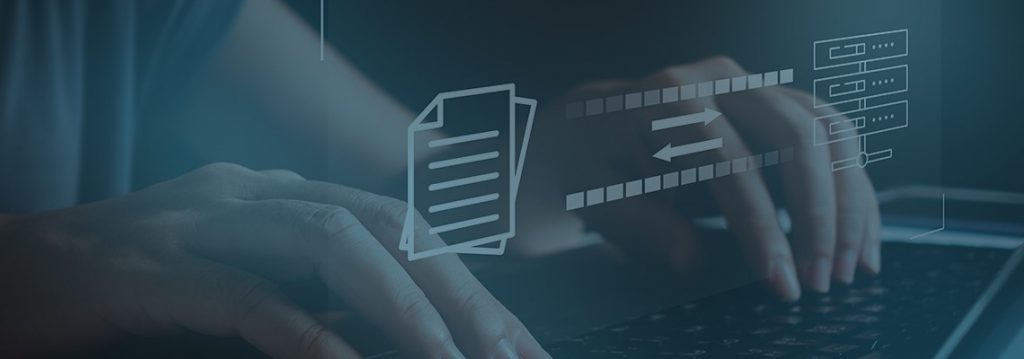
Ensuring KYC Verification Meets Your Requirements: Navigating Security with DoxAI
In a world dominated by digital transactions, safeguarding against financial crimes is of paramount importance. The Australian government emphasizes the significance of ‘Know Your Customer’ (KYC) procedures, making it essential for reporting entities to implement robust customer identification and verification processes. Understanding KYC – A Fundamental Pillar of Financial Security: KYC, or ‘Know Your Customer,’ is...

Boosting Business Efficiency: 3 Reasons DoxAI is a Game-Changer
In the rapidly evolving digital landscape, businesses are seeking innovative solutions to stay ahead, and DoxAI emerges as a pivotal player. Discover the three compelling reasons why businesses are wholeheartedly embracing DoxAI for a transformative boost in productivity. 1 – Streamlined Operations with DoxAI’s Plug-and-Play Modular Architecture Efficiency is the name of the game and...

Unlocking Tomorrow’s Finance: DoxAI Redefines the Future of digitalisation with AI
Giuseppe Porcelli, the CEO of Lakeba, a global venture catalyst firm specializing in innovative digital solutions for diverse industries, including financial services, invites you to delve into the synergy of two groundbreaking technologies – quantum computing and artificial intelligence (AI) – and their potential impact on the future of financial services. Understanding the Power Duo: Quantum...
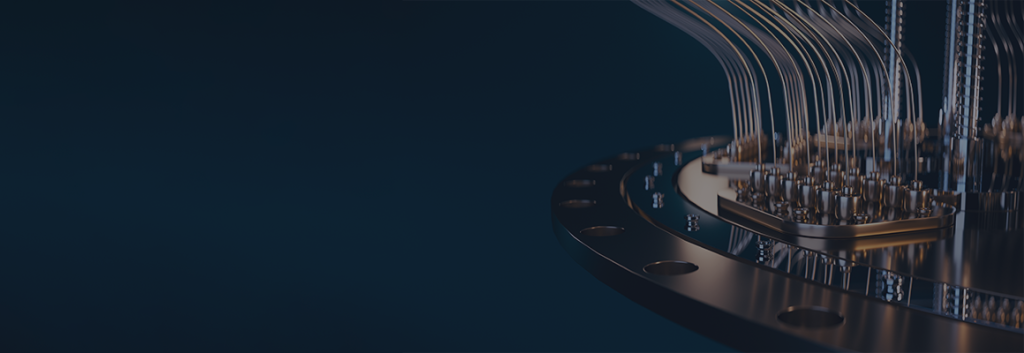
News & Media
UAE launches new AI centre of excellence to drive sovereign technology and innovation
Five flagship AI projects unveiled to accelerate national AI strategy Dubai: The UAE has launched a new initiative with the opening of the AI Centre of Excellence, established by Lakeba Group, DoxAI, AqlanX, and the University of Wollongong in Dubai (UOWD). Located at UOWD’s campus in Dubai Knowledge Park, part of TECOM Group PJSC, the...
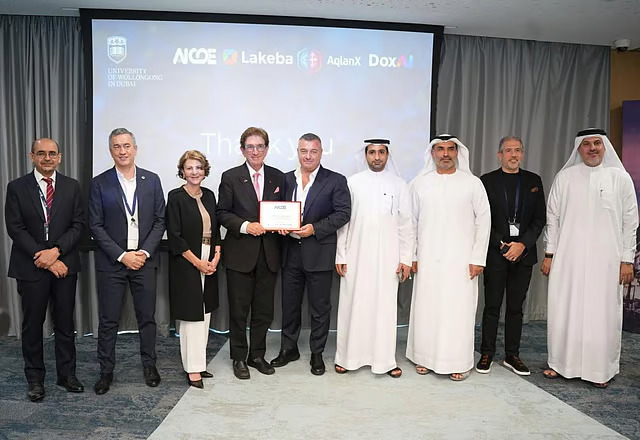
DoxAI appoints Kevin Wo as Non-Executive Director
DoxAI is excited to announce the appointment of Kevin Wo as a Non-Executive Director. Kevin brings twenty-nine years of experience across Microsoft, Oracle, IBM, and PwC. He strengthens the board as DoxAI scales its AI automation platforms in Australia and abroad.
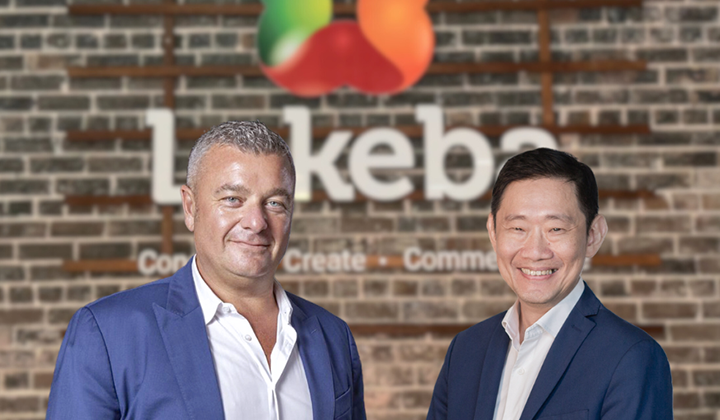
DoxAI & WhiteHawk Announce Strategic Partnership
DoxAI and WhiteHawk have formed a strategic partnership to deliver AI automation and cyber risk solutions for enterprises in Australia and North America. The collaboration blends DoxAI enterprise grade workflow automation with WhiteHawk cyber risk analytics to streamline compliance, strengthen resilience and accelerate secure transformation across finance, legal, healthcare, education and government.
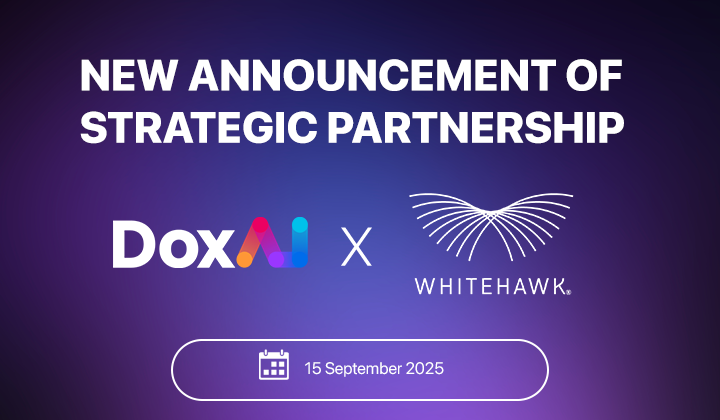
DoxAI Appoints Microsoft ANZ CTO Sarah Carney to its Board of Directors
DoxAI announces the appointment of Sarah Carney as a non-executive director to its board. Sarah is Microsoft’s National Chief Technology Officer in Australia and New Zealand, and she brings a wealth of expertise in technology and business strategy to the role.
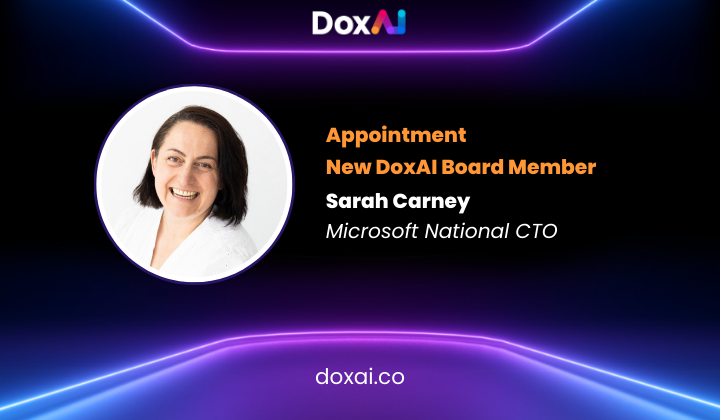
DoxAI Drives Digital Solutions for Federal and State Government Agencies through Strategic Partnership with Eccoi Pty Limited
DoxAI is proud to announce a new strategic partnership with Canberra-based IT consultancy and recruitment firm, Eccoi Pty Limited. This collaboration is set to provide digital solutions to Federal and State Government agencies Australia-wide, simplifying workflow automation and delivering cutting-edge AI-powered systems across government sectors.
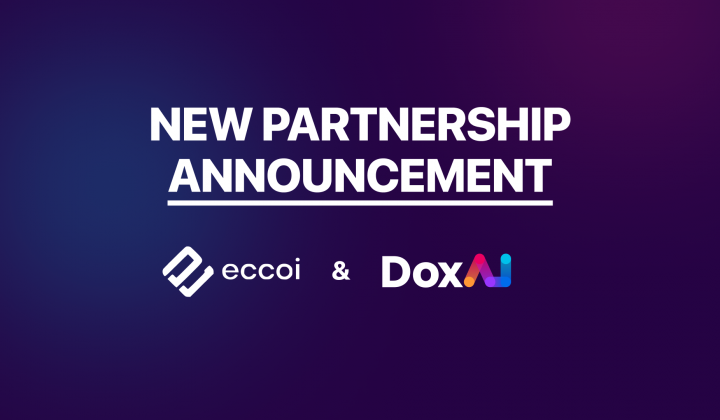
DoxAI (a Venture of Lakeba) Collaborates with Perpetual Corporate Trust and Microsoft to Enhance Financial Services
Global software giant Microsoft has joined forces with DoxAI, a venture of Australia’s Lakeba Group, and Perpetual Limited (ASX:PPT) to provide financial services companies with access to cutting-edge technology that can help them grow and evolve.

Unlocking the Future of E-Signatures: DoxAI Introduces GPT-4 Enhanced Document Intelligence
DoxAI (a Venture of Lakeba) uses Microsoft Azure OpenAI Service to revolutionise document comprehension for users, transforming digital signatures and witnessing processes.

Need further Information?
Please do not hesitate to reach out to sales@doxai.co, we are happy to help you if you need further assistance.
We enable businesses to automate processes with our AI-driven digital solutions.
